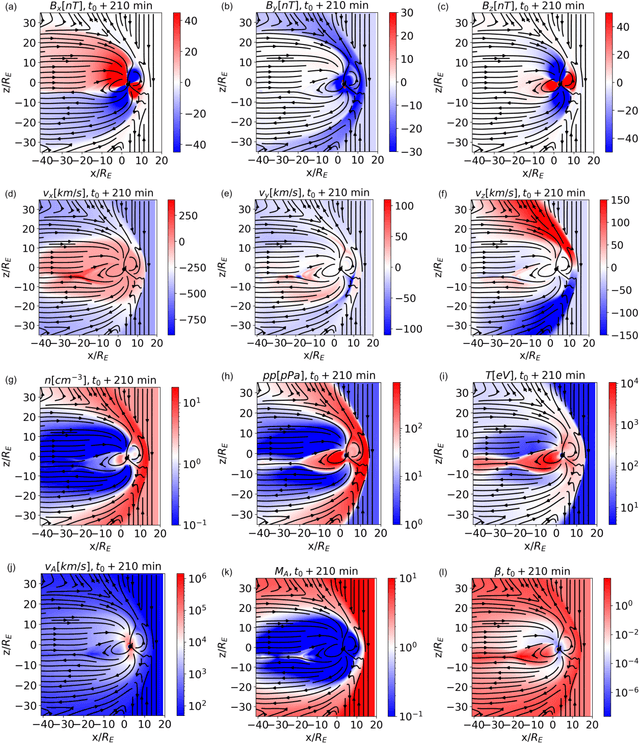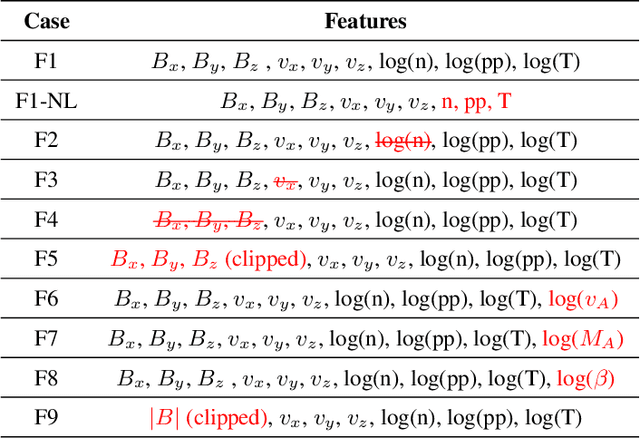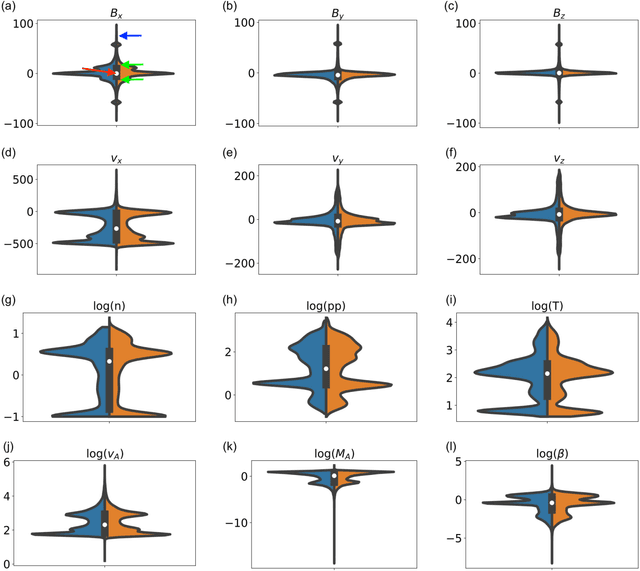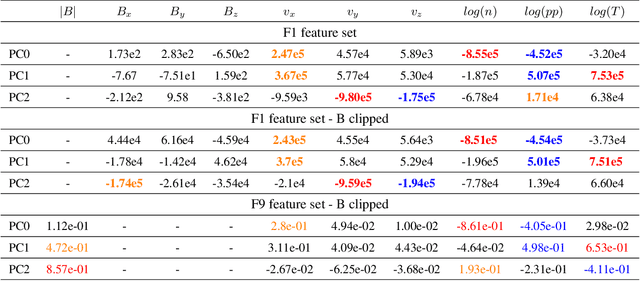Maria Elena Innocenti
Unsupervised classification of fully kinetic simulations of plasmoid instability using Self-Organizing Maps (SOMs)
Apr 26, 2023Abstract:The growing amount of data produced by simulations and observations of space physics processes encourages the use of methods rooted in Machine Learning for data analysis and physical discovery. We apply a clustering method based on Self-Organizing Maps (SOM) to fully kinetic simulations of plasmoid instability, with the aim of assessing its suitability as a reliable analysis tool for both simulated and observed data. We obtain clusters that map well, a posteriori, to our knowledge of the process: the clusters clearly identify the inflow region, the inner plasmoid region, the separatrices, and regions associated with plasmoid merging. SOM-specific analysis tools, such as feature maps and Unified Distance Matrix, provide one with valuable insights into both the physics at work and specific spatial regions of interest. The method appears as a promising option for the analysis of data, both from simulations and from observations, and could also potentially be used to trigger the switch to different simulation models or resolution in coupled codes for space simulations.
Unsupervised classification of simulated magnetospheric regions
Sep 10, 2021



Abstract:In magnetospheric missions, burst mode data sampling should be triggered in the presence of processes of scientific or operational interest. We present an unsupervised classification method for magnetospheric regions, that could constitute the first-step of a multi-step method for the automatic identification of magnetospheric processes of interest. Our method is based on Self Organizing Maps (SOMs), and we test it preliminarily on data points from global magnetospheric simulations obtained with the OpenGGCM-CTIM-RCM code. The dimensionality of the data is reduced with Principal Component Analysis before classification. The classification relies exclusively on local plasma properties at the selected data points, without information on their neighborhood or on their temporal evolution. We classify the SOM nodes into an automatically selected number of classes, and we obtain clusters that map to well defined magnetospheric regions. We validate our classification results by plotting the classified data in the simulated space and by comparing with K-means classification. For the sake of result interpretability, we examine the SOM feature maps (magnetospheric variables are called features in the context of classification), and we use them to unlock information on the clusters. We repeat the classification experiments using different sets of features, we quantitatively compare different classification results, and we obtain insights on which magnetospheric variables make more effective features for unsupervised classification.
 Add to Chrome
Add to Chrome Add to Firefox
Add to Firefox Add to Edge
Add to Edge